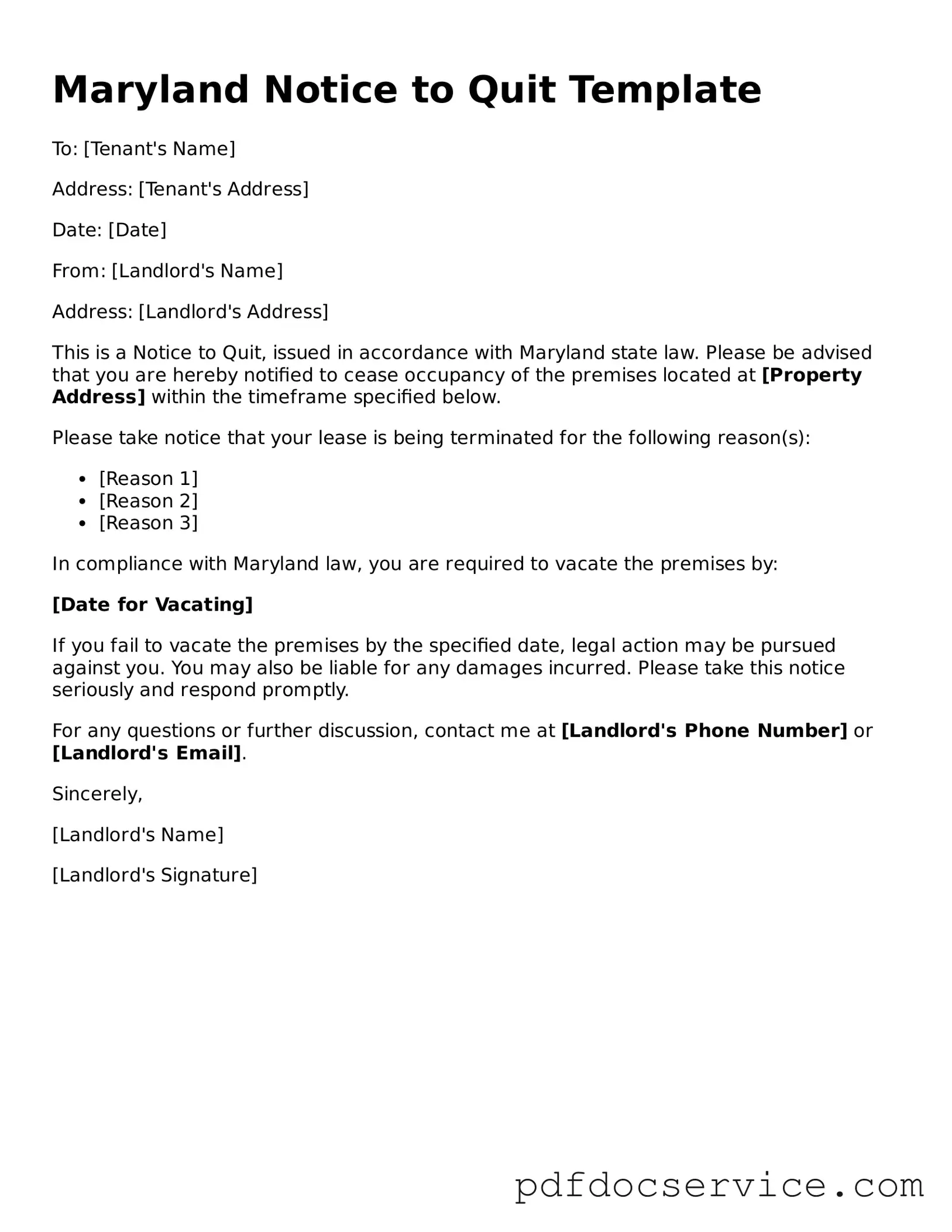The Maryland Notice to Quit form is a legal document used by landlords to notify tenants that they must vacate the rental property. This notice is typically issued when a tenant has violated the lease agreement, such as failing to pay rent or engaging in illegal activities. The form outlines the reason for the eviction and provides a deadline for the tenant to leave the property.
When should a landlord use a Notice to Quit?
A landlord should use a Notice to Quit when a tenant has breached the lease agreement. Common reasons include:
-
Non-payment of rent
-
Violation of lease terms
-
Illegal activity on the premises
-
Property damage
Issuing this notice is often the first step in the eviction process.
How much notice must be given to the tenant?
The amount of notice required varies depending on the reason for the eviction. Generally, landlords must provide:
-
14 days for failure to pay rent
-
30 days for lease violations
-
60 days for month-to-month tenancies without cause
It is important to check local laws as they may have specific requirements.
Does the Notice to Quit need to be in writing?
Yes, the Notice to Quit must be in writing. This ensures that there is a clear record of the landlord's intent to terminate the tenancy. The written notice should include details such as the tenant's name, the property address, the reason for eviction, and the deadline for vacating.
What happens if the tenant does not leave by the deadline?
If the tenant does not vacate the property by the deadline specified in the Notice to Quit, the landlord may proceed with filing an eviction lawsuit. This process involves going to court to seek a judgment that allows for the tenant's removal from the property.
Can a tenant contest a Notice to Quit?
Yes, a tenant can contest a Notice to Quit. If a tenant believes the notice is unjust or that they have not violated the lease, they can respond to the notice and present their case in court if an eviction lawsuit is filed. It is advisable for tenants to seek legal counsel in such situations.
While there is no strict format mandated by law, the Notice to Quit should include essential information such as:
-
The date of the notice
-
The tenant's name and address
-
The reason for the eviction
-
The date by which the tenant must vacate
-
The landlord's contact information
Using a clear and straightforward format can help avoid confusion.
Can a landlord issue a Notice to Quit for any reason?
No, a landlord cannot issue a Notice to Quit for any reason. The notice must be based on a legitimate breach of the lease agreement or applicable laws. It is important for landlords to understand their rights and responsibilities under Maryland law to avoid potential legal issues.
